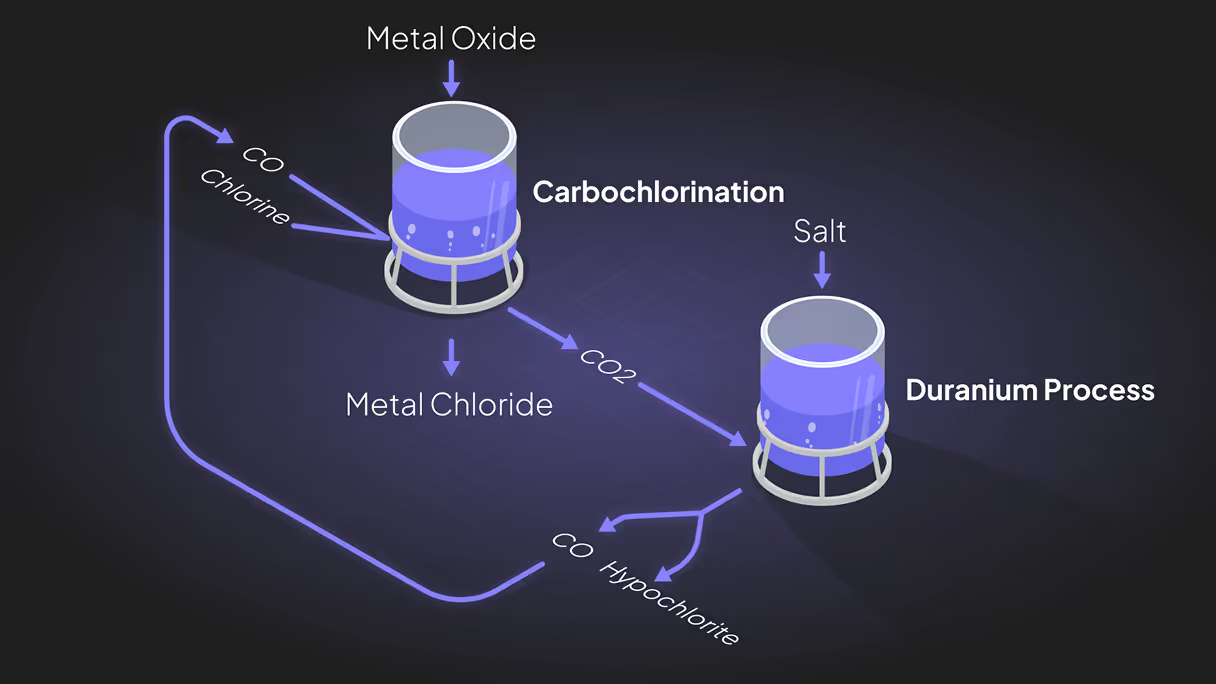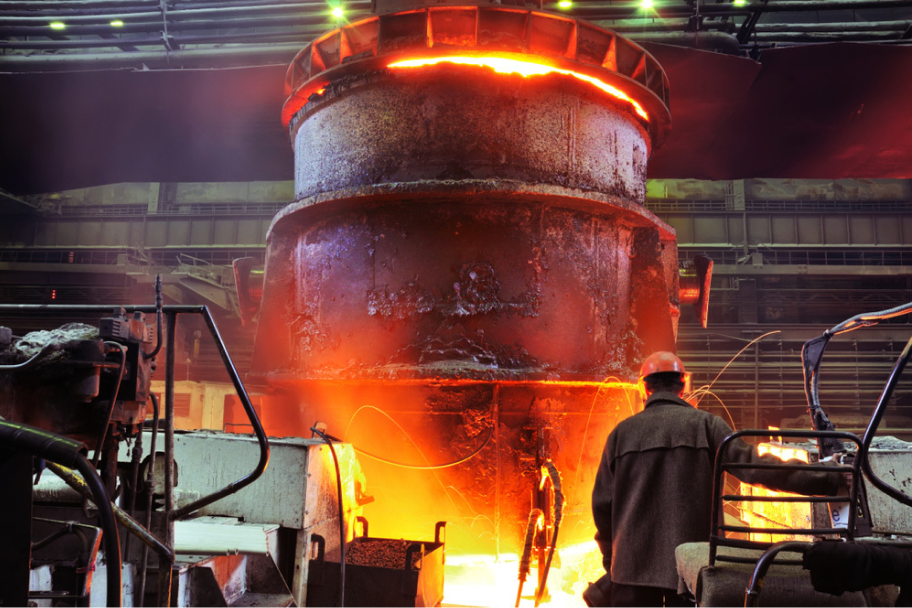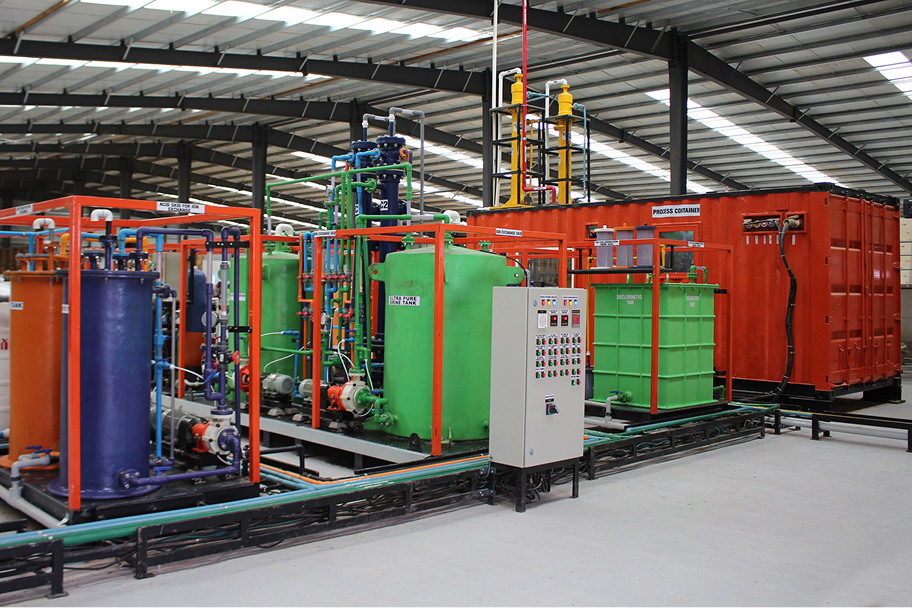
Unlocking U.S. Metal Independence
Duranium’s novel reactor technology slashes emissions, reduces costs, and secures critical U.S. minerals from foreign dependence.
.avif)
Duranium unlocks the full potential of proven carbochlorination methods for Titanium, Magnesium, Aluminum, Zirconium, and Hafnium via co-production
We’ve modernized carbochlorination metallurgy with a reactor that recycles its byproducts into feedstock (CO) and creates a highly valuable coproduct (hypochlorite). This loop achieves best in class profitability at Chinese-level pricing without subsidies



What is carbochlorination and why is unlocking its full potential so important?
Carbochlorination converts stable metal oxides into chlorides using chlorine and carbon at high temperatures (MOx + C + Cl₂ → MClᵧ + CO₂). These chlorides are far easier to reduce into pure metals.
It is the core method for producing titanium, hafnium, and zirconium, and was once the dominant route for magnesium before being displaced by China’s labor-intensive Pidgeon process.
The challenge: conventional carbochlorination is CO₂ - intensive and relies on costly carbon feedstocks - unlocking a cleaner, cheaper pathway would transform critical metal production.

The Duranium process can work with any source of CO₂, though the greatest opportunity lies when the CO produced can be recycled directly back into the process that created the CO₂.

Key Advantages of the Duranium Process
Parity of critical metals with China on cost, reduced emissions, new U.S. jobs, and secure supply chains

No direct emissions

Independence from subsidies because of co-production

